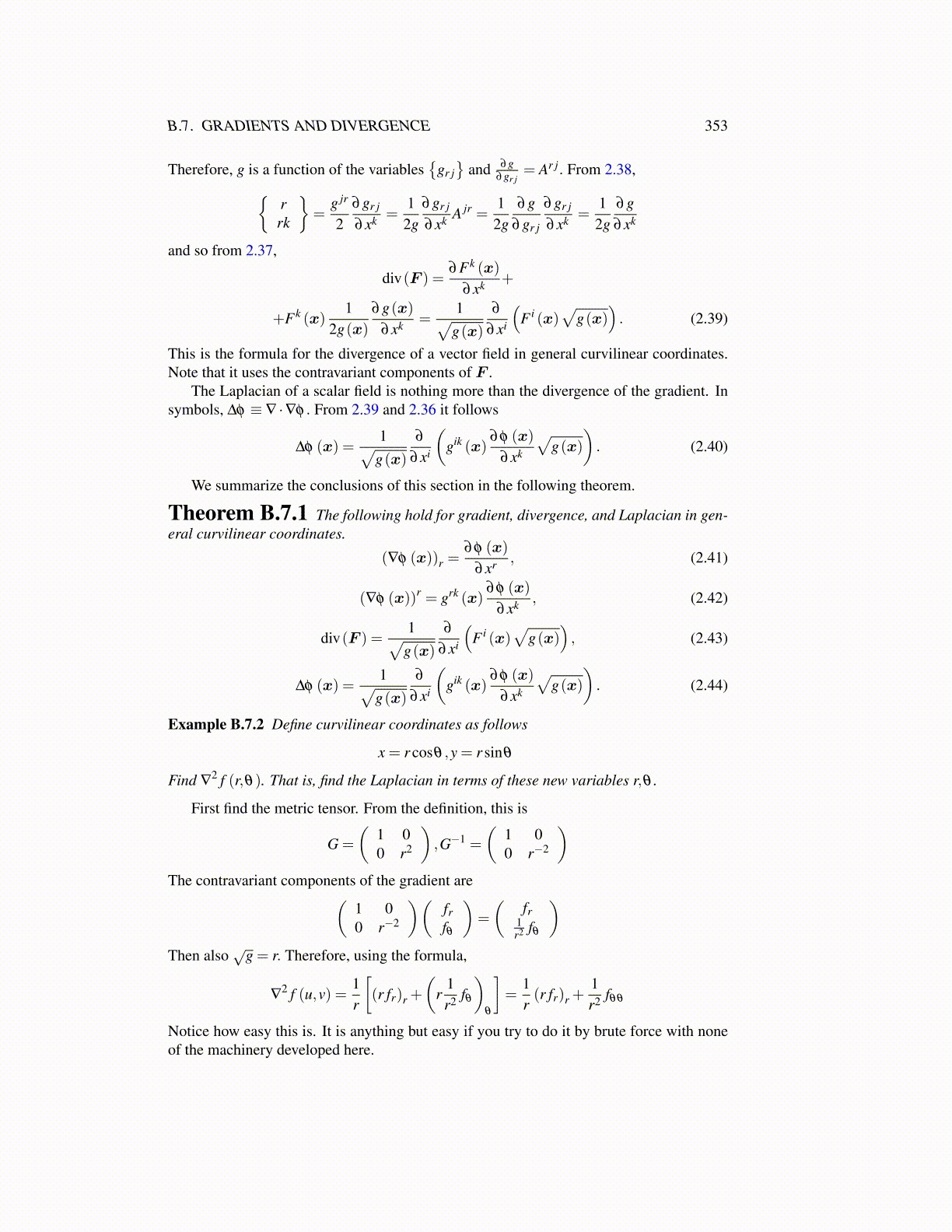
B.7. GRADIENTS AND DIVERGENCE 353
Therefore, g is a function of the variables{
gr j}
and ∂g∂gr j
= Ar j. From 2.38,{rrk
}=
g jr
2∂gr j
∂xk =1
2g∂gr j
∂xk A jr =1
2g∂g
∂gr j
∂gr j
∂xk =12g
∂g∂xk
and so from 2.37,
div(F ) =∂Fk (x)
∂xk +
+Fk (x)1
2g(x)∂g(x)
∂xk =1√
g(x)
∂
∂xi
(F i (x)
√g(x)
). (2.39)
This is the formula for the divergence of a vector field in general curvilinear coordinates.Note that it uses the contravariant components of F .
The Laplacian of a scalar field is nothing more than the divergence of the gradient. Insymbols, ∆φ ≡ ∇ ·∇φ . From 2.39 and 2.36 it follows
∆φ (x) =1√
g(x)
∂
∂xi
(gik (x)
∂φ (x)
∂xk
√g(x)
). (2.40)
We summarize the conclusions of this section in the following theorem.
Theorem B.7.1 The following hold for gradient, divergence, and Laplacian in gen-eral curvilinear coordinates.
(∇φ (x))r =∂φ (x)
∂xr , (2.41)
(∇φ (x))r = grk (x)∂φ (x)
∂xk , (2.42)
div(F ) =1√
g(x)
∂
∂xi
(F i (x)
√g(x)
), (2.43)
∆φ (x) =1√
g(x)
∂
∂xi
(gik (x)
∂φ (x)
∂xk
√g(x)
). (2.44)
Example B.7.2 Define curvilinear coordinates as follows
x = r cosθ ,y = r sinθ
Find ∇2 f (r,θ). That is, find the Laplacian in terms of these new variables r,θ .
First find the metric tensor. From the definition, this is
G =
(1 00 r2
),G−1 =
(1 00 r−2
)The contravariant components of the gradient are(
1 00 r−2
)(frfθ
)=
(fr
1r2 fθ
)Then also
√g = r. Therefore, using the formula,
∇2 f (u,v) =
1r
[(r fr)r +
(r
1r2 fθ
)θ
]=
1r(r fr)r +
1r2 fθθ
Notice how easy this is. It is anything but easy if you try to do it by brute force with noneof the machinery developed here.